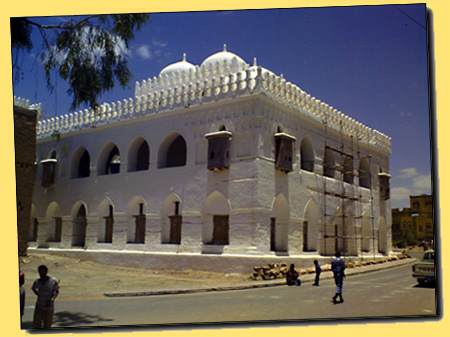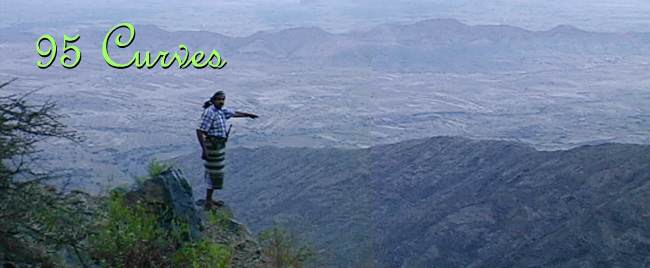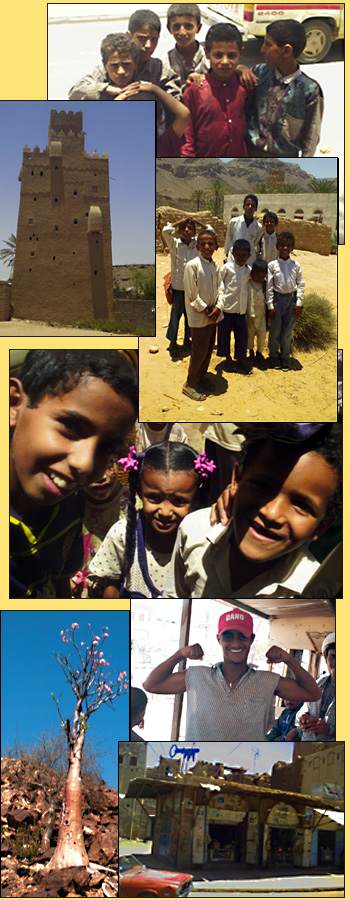This leg of our trip took us through the governate of Shabwa into that of Al-Bayda. Each area had its own type of architecture and scheme of colors. We began to notice more and more of these subtle changes in style as we passed from one region to the next.
Azan, a typical town in the region, featured many tall buildings decorated with kahlfa carved wooden window screens [see left]. The taller buildings allowed the main living area to be elevated high, creating a vertical draft that substantially cooled the air inside. Small windows and thick walls further cooled the inhabitants.
As usual, our presence began to draw the children from their homes.
"Surrah! Surrah!" cried the school boys [see left] eager to pose for our cameras. How could we resist such fresh faces?
Table-top mountains of chalk stone surround the town of Habban, once a Jewish settlement and major center of silversmithing. We were told that there were still some Jews living in Habban and we were eager to meet them; however we were too late. The last Jewish family had left the area only 2 years prior. There were once thousands of Jews in Yemen but almost all have now emigrated to Israel.
Sahdin [see left], a young man at a tea-stop along the way, flexed his muscles for us and practiced his English proudly telling us of his cousins in the US. Many residents of this town had relations that were living in Detroit (America) and employed in automobile manufacturing. As Americans, we were warmly welcomed with smiles and handshakes. Shining smiles were to be found in all the towns we visited in Yemen.
"Bas!, Stop!" Ahmed said. He had been intently watching the walls of the canyon we were passing through and had located what he was looking for. The car pulled to the side of the road in front of rare bottle tree. Clinging to the rocks beside the road, this plant was usually found on Yemen's island of Socotra. It had doubtless started life as a seed, blown over the Arabian Ocean by the annual monsoon, and had taken root under a rock. Its slender champagne colored trunk betrayed its youth. These trees can grow to be very old with trunk diameters of almost a meter.
At the Al Amariyyah Mosque [pictured at the bottom of this page] at Rada'a, I sat for a cup of tea while Gary and the boys took a tour of the historic house of worship. Women were not allowed in mosques -- especially non-Islamic women. This mosque was very old, being constructed during the lifetime of Mohammed (PBUH). I was content to admire the newly painted exterior and explore the wares of the merchants lining the side walks.
Gary filmed the interior of the mosque while I looked in one of the small shops [bottom right].


